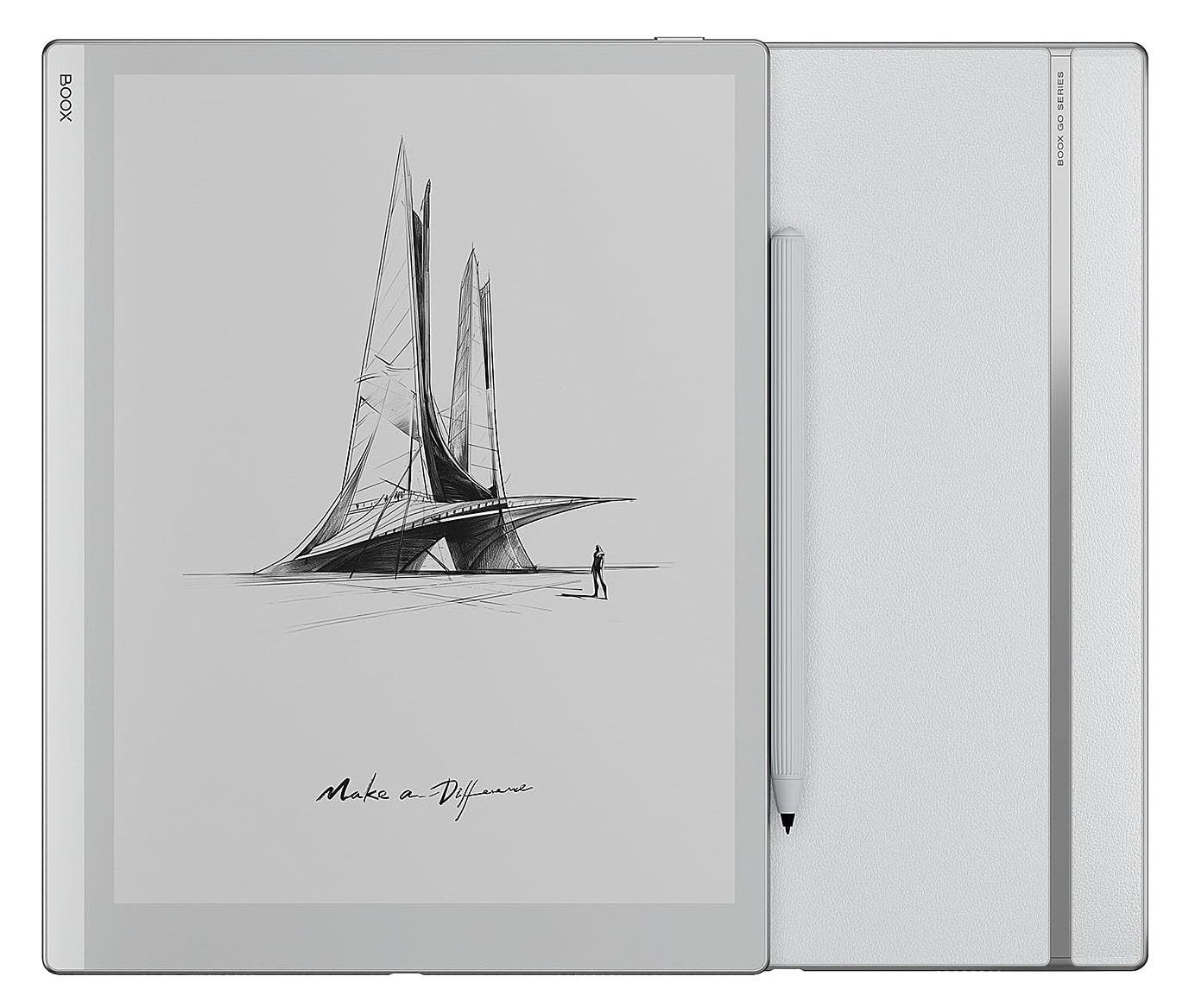The Future of Tablets? Boox and the Charm of Electronic Paper
Why ‘Bad’ Screens Might Be the Best Thing for Your Digital Life
Screens are great. With the ability to create helpful apps and animations on a small device that fits in your pocket, we’ve changed the way we communicate, entertain ourselves, and interact with the world. We can now catch rides, play music, and chat across long distances, all from our screens.
But we’ve gotten a little too good at it. What started as satisfying small animations has evolved into the endless feeds of TikTok and Instagram Reels. It’s time to step back from these infinite scrolls where possible. It’s time to embrace a different kind of screen—imperfect by design.
Introducing Boox
Boox is a company that makes “bad screens,” although they are actually quite impressive. Their devices use electronic paper, like a Kindle, but offer a tablet experience similar to an iPad.
Why now
Recent advancements have made electronic paper screens much more practical than before. One major improvement is the refresh rate, measured in hertz, which indicates how many times a screen refreshes per second. For reference, a movie typically runs at 30 frames per second, your laptop likely refreshes at 60 hertz, and modern phones now come with 120 hertz screens. While the difference between 60 hertz and 120 hertz is noticeable, it’s something you only appreciate after experiencing the faster one.
What Boox Offers
Boox’s value proposition is simple: they sell Android devices with electronic paper screens. The software is Android, and the screen uses the same e-ink technology as a Kindle, just with significant improvements.
Their tablets range in size, from the Ultra C Pro at 10 inches to the smaller Palma, which is closer to a phone. The Palma has gained a niche following among people looking to replace their smartphones with it, although its camera quality is not on par with something like an iPhone. Still, the appeal is understandable.
Boox has competitors that you have probably seen ads for. ReMarkable is the one I see the most. However, the key difference is that Boox devices run on Android, so there’s no new software to learn or adapt to. Boox doesn’t dictate how you should use their devices; they simply offer a screen that looks like paper. In contrast, the only real difference between a Boox tablet and a Samsung Galaxy Tab is that Boox uses an electronic paper display.
What’s on the Horizon
The most impressive device I’ve seen is the Daylight tablet, but it’s being released in fairly small batches and you probably won’t be able to find one on sale until next year.
The Daylight tablet features a groundbreaking 60 hertz electronic paper display with their own “Live Paper” technology. Watching it in action is truly impressive.




Are these ereaders like Kindle?